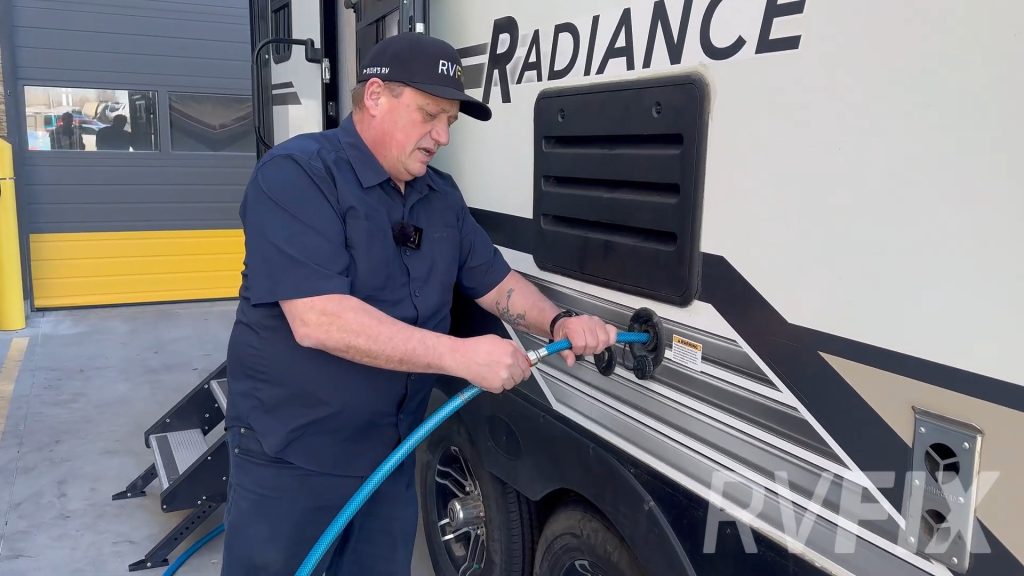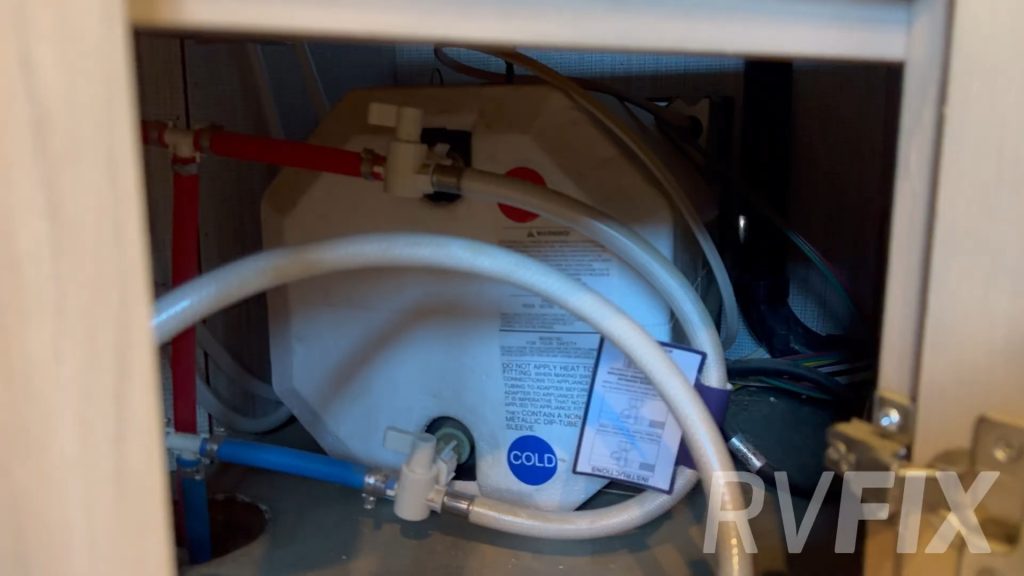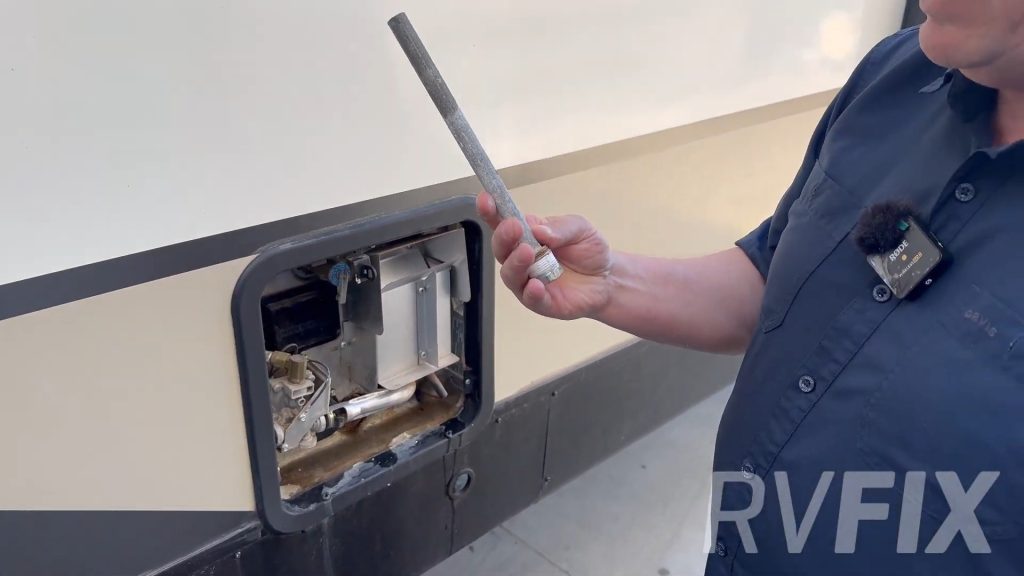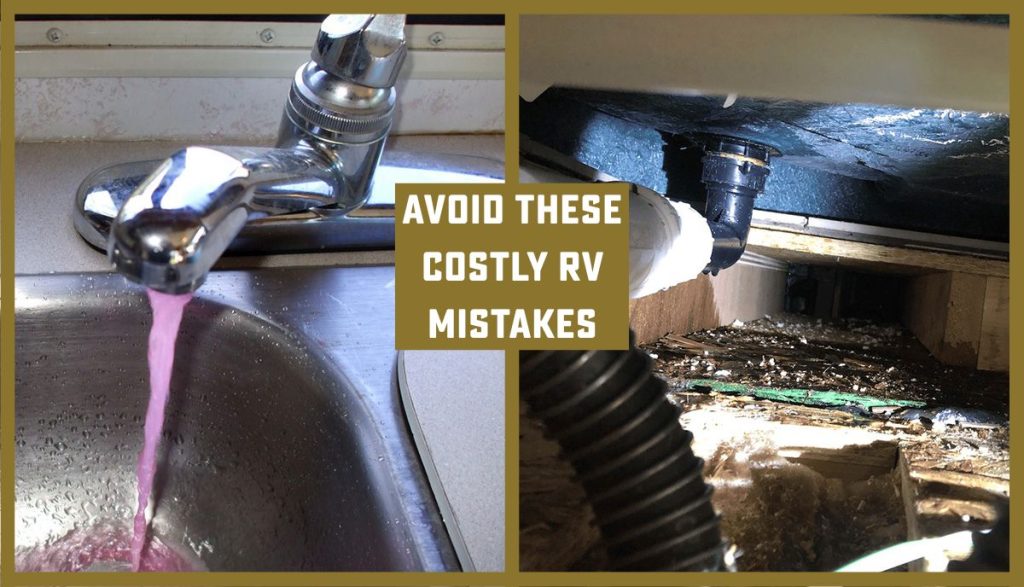
RV Spring Prep: Why Skipping These Steps Could Cost You Big
Think you can just hook up the hose and hit the campground?
What happens when you turn on the faucet and pink antifreeze comes pouring out — or nothing comes out at all?
At Bish’s RV, we’ve been servicing RVs for nearly 40 years, and every spring we see RVs roll into our service centers with problems that could’ve been avoided by taking the right steps to get ready for camping season.
In this article, we’ll walk you through the most common (and costly) issues RV owners face when they skip or rush their spring prep.
By the end, you’ll know exactly what to check and why — so you can avoid disaster and get back to camping with confidence.
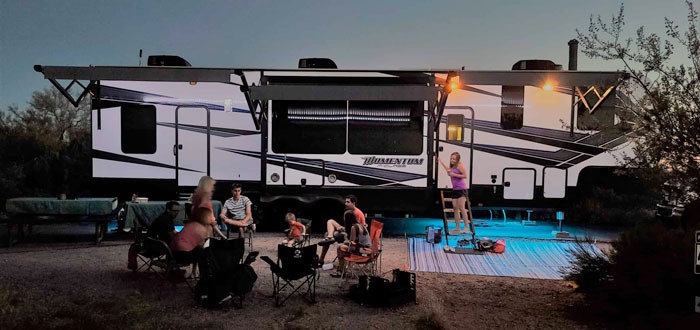
Learn From a Pro!
Our Professional Technician shows you everything you need to know to get your camper ready for the first camping trip of the season.
Spring RV Prep Isn’t Just a Chore — It’s the First Step to a Smooth Camping Season
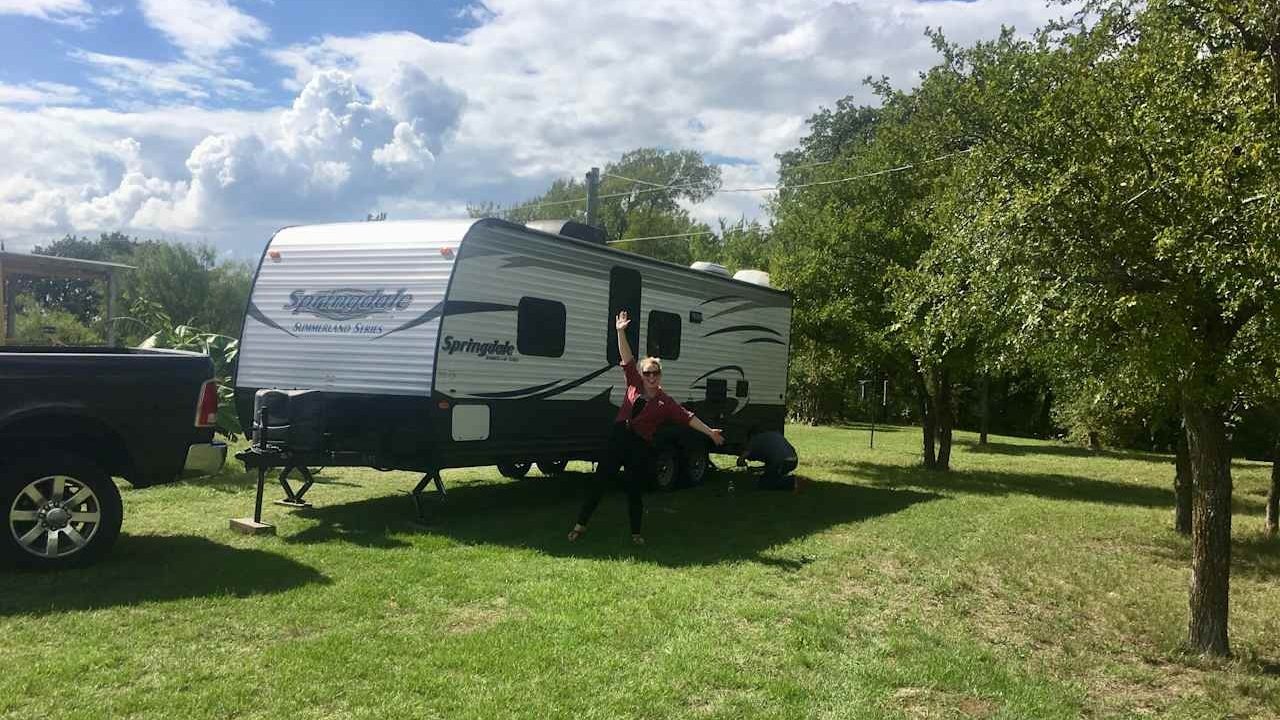
The First Camping Trip of the Year!
Spring is exciting — camping trips are around the corner, and it’s finally time to shake off winter and hit the road. But getting your RV ready for the season isn’t as simple as filling the fresh tank and heading out.
Miss a step, and you could end up with no water, strange smells, or even serious damage that puts your whole trip on hold.
That’s why it’s so important to follow a full spring prep routine — and to have backup when something doesn’t go as planned.
With RVFIX, Bish’s new subscription RV service, you get year-round access to certified RV technicians through virtual video calls.
If your water pump won’t turn on or your faucets aren’t running right, you can connect with a real tech in minutes — without ever leaving your driveway.
The good news? You don’t need to be an RV expert to handle these spring prep steps.
Most RV owners can do them at home with just a little guidance — and we’re here to walk you through what to watch out for.
1. Your Water Still Has Antifreeze In It
If you winterized your RV last fall (or had someone do it for you), there’s a good chance your plumbing system is still full of RV antifreeze — that bright pink stuff. It’s harmless in small amounts, but you definitely don’t want to be drinking it, showering in it, or cooking with it.
Failing to flush out the antifreeze can leave your water tasting and smelling terrible. Worse, it can gunk up your water pump or faucet seals over time, causing long-term wear or even failure.
To fix it, you’ll need to run clean water through your entire plumbing system until it runs clear — one faucet at a time.
[Watch an RV tech walk you through the process here]
Once you’ve flushed the system, your water will be clean, fresh, and ready for that first morning coffee at the campsite.
2. Your Water Pump Isn’t Pulling From the Fresh Tank
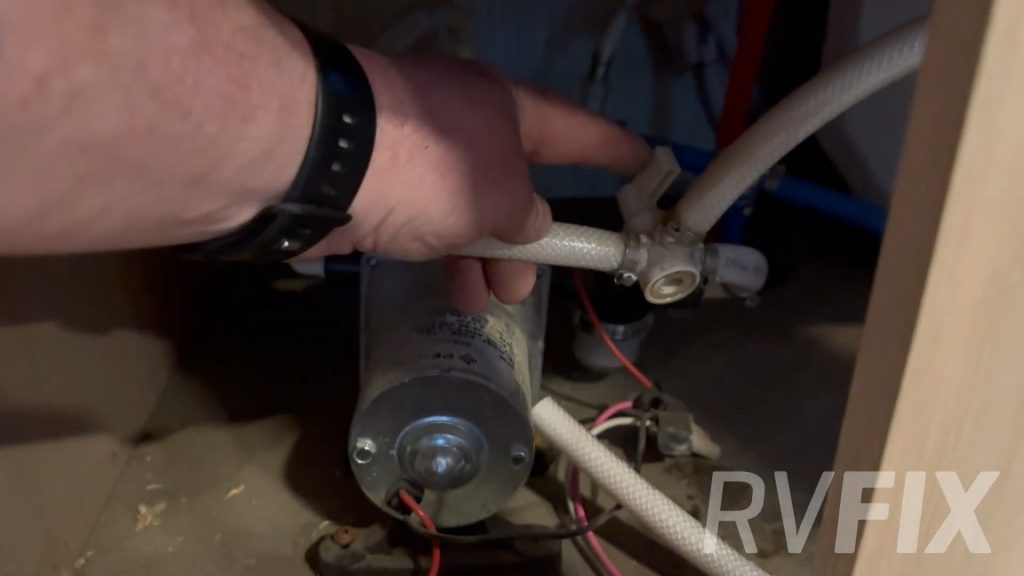
You filled the fresh water tank, flipped on the pump — but nothing’s happening. Or maybe the water starts, then sputters and stops. In many cases, this isn’t a broken pump… it’s just a valve in the wrong position.
During winterization, a special suction hose is used to pull antifreeze into the plumbing system. If that valve is still open, your pump will keep trying to pull from an empty hose instead of the fresh tank — leaving you with no running water.
The fix is simple: locate the pump and turn the valve so it pulls from the freshwater tank, not the antifreeze line.
[Watch an RV tech walk you through the process here]
Once it’s switched, your pump will prime properly and your faucets will start flowing again — no service call required.
3. Your Water Heater Is Still in Bypass Mode
You’ve got hot water on your mind — but if your water heater is still bypassed from winter, it won’t fill up, and your faucets will run cold no matter how long you wait.
Bypassing the water heater is a standard winterization step to avoid filling it with antifreeze. But if those valves aren’t switched back before spring, the water pump can’t send water into the tank — and trying to heat an empty tank can even damage the unit.
To fix it, find your water heater bypass valves (usually located near the heater itself) and turn them so water can flow back into the tank.
[Watch an RV tech walk you through the process here]
Once your water heater is full and ready, you’ll be able to run hot water for dishes, showers, and that first warm hand wash at the campground.
 Need Help Getting This Right?
Need Help Getting This Right?
Spring prep doesn’t have to be a guessing game. With an RVFIX membership, you get year-round access to certified RV technicians through live video calls.
Whether your water pump isn’t working, a valve is stuck, or you just want someone to walk you through a step, our team has your back — wherever your RV is parked.
Learn more about RVFIX and get started today »
4. You Forgot to Reinstall the Water Heater Plug or Anode Rod
It’s easy to miss — but if the plug or anode rod isn’t back in place before you start filling the system, water will pour right out of your heater and onto the ground. Worst case, it leaks into your RV’s underbelly or compartment before you realize it.
The anode rod is a metal rod that screws into your water heater and helps prevent rust by attracting corrosion to itself instead of your tank. It also acts as the drain plug when winterizing. If it’s not reinstalled in spring, the water heater can’t hold water.
To fix it, locate your water heater outside the RV and thread the anode rod or drain plug back into place. Make sure it’s snug, but don’t overtighten.
[Watch an RV tech walk you through the process here]
Once it’s sealed up, your water heater will fill properly, and you’ll be leak-free and ready to heat water.
5. Air Is Trapped in the Water Heater
If you turn on the hot water and get a bunch of hissing, sputtering, or no water at all, you’re probably just hearing trapped air being pushed out of the system. It’s totally normal — but if you don’t let that air escape, your water heater can’t fully fill or function properly.
Ignoring this step can also trick you into thinking something’s broken when really the tank just isn’t full yet.
To fix it, open a hot water faucet and let it run until the sputtering stops and a steady stream of water comes out. This lets the trapped air escape and tells you the water heater is full.
[Watch an RV tech walk you through the process here]
Once it’s done, you’ll have full water pressure and hot water that flows smoothly — no more mystery gurgles.
6. You Missed an Outside Shower, Faucet, or Kitchen Line
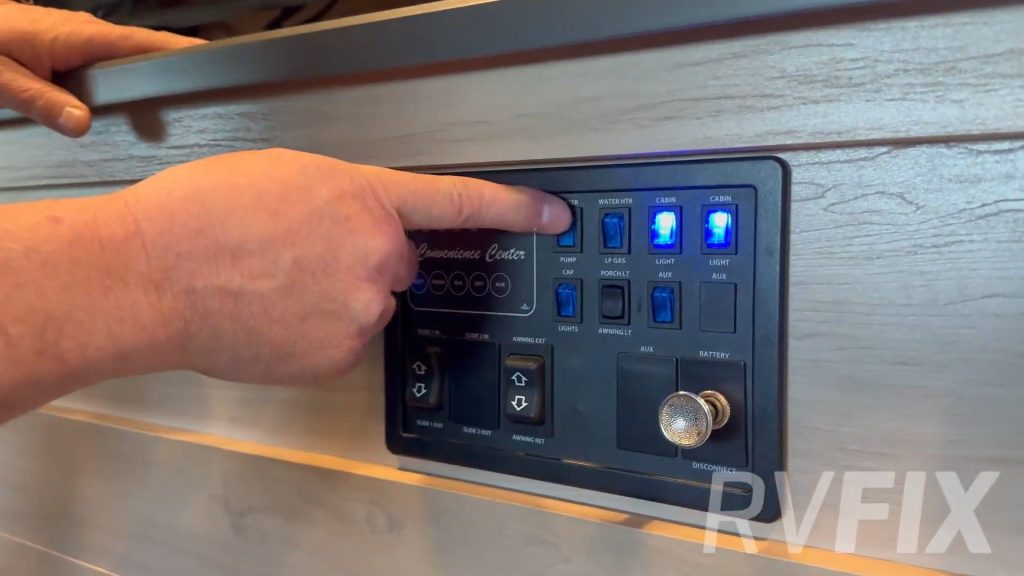
You checked the kitchen and bathroom — but what about the outdoor shower? The outside kitchen? These fixtures are easy to forget during spring prep, but they need to be flushed and checked just like your indoor plumbing.
If left full of antifreeze or air, these lines can stay blocked or build up pressure, leading to cracks, leaks, or damage you won’t notice until you try to use them later — or worse, until you find water leaking into storage compartments.
To fix it, open each outside faucet and run both hot and cold water until it flows clear and steady.
[Watch an RV tech walk you through the process here]
Once they’re flushed and flowing, you’ll be confident every part of your RV — inside and out — is ready for adventure.
Need a Hand? That’s Why We Created RVFIX.
The number one complaint we hear from RV owners? Service takes too long.
Sometimes you just need quick help — but instead, you’re stuck waiting weeks or hauling your camper in for something simple.
So we built RVFIX: a subscription service that gives you year-round access to certified RV techs through live video calls. Fast answers. No waiting rooms. No towing.
Every new or used RV purchased from Bish’s comes with a free year of RVFIX — but anyone can subscribe. You don’t have to be a Bish’s customer to get help when you need it.
Get Ready for Spring — and Stay Out of the Service Bay
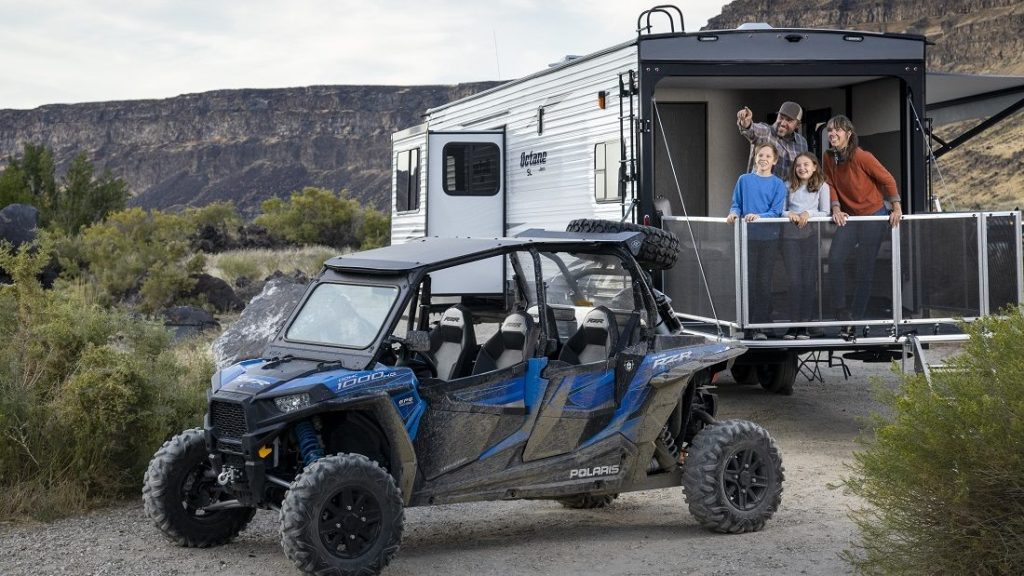
Getting your RV ready for camping season can feel overwhelming — especially when one missed step can lead to cold showers, weird smells, or costly damage. But now you know the six most common problems RV owners face in the spring — and how to avoid them.
At Bish’s RV, we’re here to help you spend more time on the trails and less time in the service shop.
Here’s what you can do next:
- Browse RV Inventory: [Find the right RV for your next adventure »
Talk to an Expert
Have questions about getting your camper ready for the first trip of the season?
Or want to talk to an outfitter about trading in or upgrading your current camper?
Keep your Camper Camp-Ready
RVFIX How-to videos on YouTube with easy Do-It-Yourself solutions to common RV Maintenance Questions.
Check out the RVFIX YouTube Channel for a free digital library of DIY RV Repair Videos

Greg Long
Bish’s RV Content Manager
Amateur adventurer; professional dreamer.
aka: The Bish-Blog-Guy

